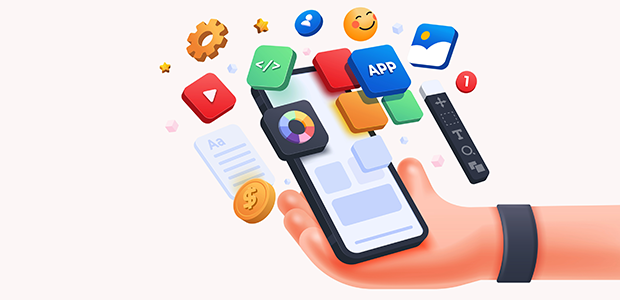
Microsoft's collaboration with Builder AI means anyone can be an app developer
Today, apps are an integral part of our lives. Think about it, to communicate, bank, learn, travel, share content, game, stream, shop and listen - you name it - we all use apps! They’ve transformed the way we live our lives, and at this point, they’re almost tricky to avoid.
Recognising this growing demand for innovative and customised apps, Microsoft has joined forces with Builder AI to advance its AI offering and empower individuals with the ability to become app developers, regardless of their technical background. News broke last week that through the partnership, Microsoft will integrate Builder AI’s no code software across Azure OpenAI service and Azure Cognitive services. And with this no code offering, the companies believe anyone can be an app developer.
But, do consumers really need more apps? And, what does this mean for app development and quality?
While this collaboration aims to democratise app development, and open up a world of possibilities for more people to create their own digital solutions, it is both a blessing and a curse for the app industry and consumers.
Democratising app development - a solution amid the digital skills gap?
Traditionally, app development has been a complex and highly specialised field, requiring in-depth programming knowledge and expertise. But today, with the emergence of no code and low code platforms, such as Builder AI’s, the barriers to entry have been significantly lowered, making it more accessible. Creating software that provides a seamless and intuitive app-building experience now means anyone can put their creativity to use and transform ideas into apps without the need for extensive coding skills.
Amid a digital skills gap that continues to widen, software which can support businesses and entrepreneurs with the skills needed to bring their ideas to life, innovate within their industries and cater to more consumers at a fraction of the time, cost and resource, is much sought after. UK workers report AI, coding and app development as the fastest growing and most in-demand digital skills today. With such high demand, platforms like this could be a good solution to support businesses amid this gap. The beauty of AI-driven platforms like this, with pre-built features and templates, is that they allow users to create apps with a simple drag-and-drop interface.
However, while this does open doors, technical skills and strategy will always be required.
A minefield of apps, means a more scrutinising consumer
At present, platforms like these do produce more basic, generic apps and as a result, the quality of these apps are up for debate. As it stands, users are already overwhelmed by choice and if the quality is not there, customer retention will be compromised. With these platforms lowering entry barriers, the quality of apps will likely also be lower.
App stores will be flooded with lower quality, lower value apps as a result - many of which could be poorly run, questionable by nature, or even more vulnerable to fraud. As a result, consumers will become even more scrutinising about the apps they download, and more aware of the red flags to look out for in these rather generic looking apps.
While it is of course a good starting point for bootstrapped companies and entrepreneurs, to attract, acquire and maintain users, the quality must be there - this goes for the app itself, and the strategy behind it. Peaking interest and gaining consumer trust will be one hurdle, the next will be maintaining it.
Getting this cut through will be key. We’ve recently seen Google supporting app developers with generative AI tools that make it easier for them to build out their app listings. However, AI currently has limited capacity to create hyper-personalised and distinctive listings for apps. In an increasingly crowded market, you simply can’t afford to have a generic sounding listing on the app store. To get noticed and convert interest into long-term users, having a well thought out App Store Optimization strategy which is synchronised with a broader acquisition strategy across paid and other owned media will be crucial. It could be all the difference in setting one app apart from the rest.
High quality equals high retention
We know user retention is notoriously challenging for mobile apps, with the churn rate for app downloads after three months a whopping 68%. Moreover, the average 30 day retention rate is just 7% for the App Store and 6% for Android. If the quality isn’t there, user engagement will be poor, and retention rates will be low. With so much competition, many of these apps will go unused or deleted altogether as a result.
Consulting experts who can elevate applications, set them apart from the crowds, but importantly, maintain users with effective retention strategies, will be key. Whether it’s improving the onboarding experience, creating an omnichannel engagement strategy, measuring and analysing performance, or boosting user engagement with greater personalisation.
Ultimately, great apps do come with investment. And while Microsoft’s partnership with Builder AI marks a significant milestone in the democratisation of technology and opening up the app market, it can only go so far. Consumers don’t just need MORE choice, they need MORE quality. Anyone looking to create an app needs to consider the quality of the app, and quality of the strategy behind it, or it will be added to the long list of widely unused and deleted applications.

